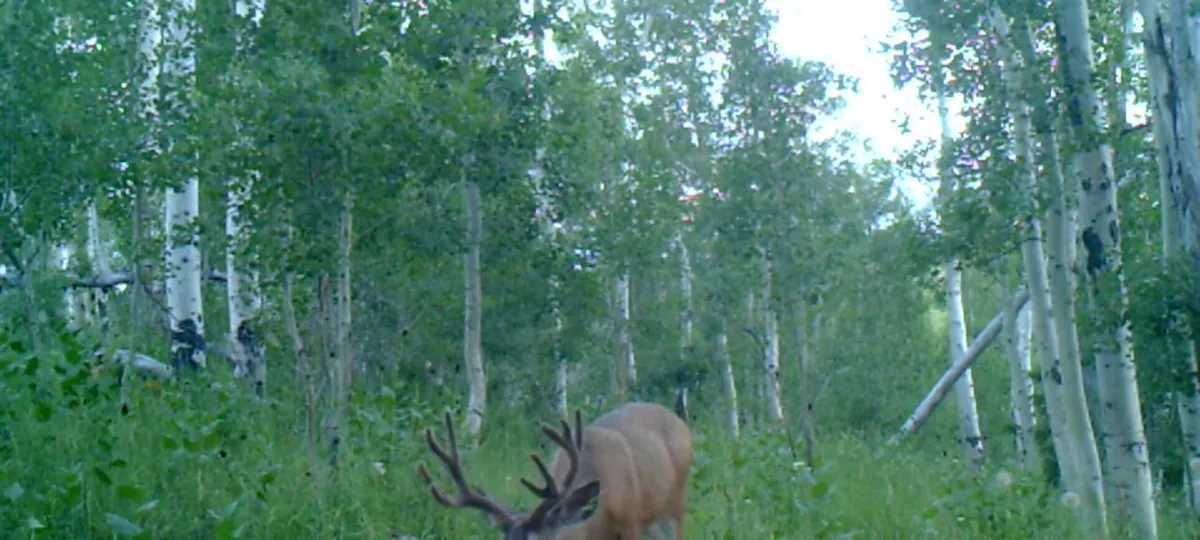
The Science Behind Mule Deer Antlers: Growth, Hormones, and Genetics
"Antlers are a status symbol in the deer world—grown not for protection, but to impress, intimidate, and ultimately pass on genes."
— Dr. Valerius Geist
Antlers aren’t just bone—they’re a window into the life cycle of mule deer and a symbol of the wild. Every year, bucks grow and shed these massive, branching crowns in a cycle that’s as complex as it is fascinating. If you’ve ever wondered how those iconic muley forks come to be—or what makes them different from whitetail racks—you’re in the right place. Let’s dig into the biology, the behavior, and the story behind mule deer antlers.
A Brief History: More Than Just Headgear
Since ancient times, antlers have had value far beyond the hunt. Cultures used them in tools, weapons, and ceremonial objects because of their toughness and the symbolic mystery behind how they grow, die, and regrow. And once science took a closer look, we realized just how wild this natural process really is.
Antlers: Living Bone on the Outside
That’s right—antlers are actual bone that grows outside the body. While they’re growing, they’re alive and packed with blood vessels. As the seasons shift, those living structures die, fall off, and start growing again.
Here’s the basic cycle:
Spring: Growth begins—covered in velvet, full of blood and nutrients. This early stage is triggered by increasing daylight, which lowers testosterone and tells the body it's time to grow. Tiny nubs emerge from the pedicles (bony bases on the skull).
Summer: Antlers grow rapidly—up to an inch per day! This is the most intense growth phase. Bucks focus on feeding and staying low-stress to support this demanding process. Velvet is thick and spongy, and antlers are vulnerable to injury.
Early Fall: Testosterone spikes, hardening the antlers and drying the velvet. Blood flow cuts off, the bone dies, and bucks prepare for the rut.
Fall/Winter: Bucks use their hardened antlers to spar and assert dominance during the rut. Battles are often ritualized, but real injuries can occur. Antlers become a tool in the social hierarchy.
Late Winter: Testosterone drops, antlers weaken at the base and fall off. This can happen gradually or in a single snap, often during normal activity like feeding or jumping.
Cycle resets: Within weeks, a new set begins to form. The cycle repeats, and antlers often come back bigger and more complex—assuming health and age are on the buck’s side.
Velvet: The Super Skin
While antlers are growing, they’re covered in a layer called velvet. This skin is loaded with blood vessels, nerves, and hair follicles, making it one of the fastest-growing tissues in the animal kingdom. It’s warm to the touch and sensitive—so much so that even tame deer don’t want it touched.
Velvet acts like a life-support system for the growing bone beneath. It delivers oxygen, minerals (like calcium and phosphorus), and protein to fuel antler development. Once the antlers are fully grown and mineralized, bucks rub them on trees and shrubs to shed the velvet. This happens fast—usually within 24 to 48 hours—and the exposed bone underneath is stained from blood and tree tannins, giving antlers that familiar brown hue.

The Hormone Behind the Headgear
The engine behind the antler cycle? Hormones—especially testosterone. Here’s how they work:
Low testosterone in spring/summer: Spurs antler growth. This hormonal environment promotes tissue regeneration and rapid bone development.
Rising testosterone in fall: Signals antlers to harden and velvet to shed. It also initiates rut behaviors like sparring, rubbing, and marking.
Post-rut drop: Triggers antlers to fall off. When testosterone plummets after breeding season, the pedicle weakens and the antler detaches.
These hormone changes are guided by daylight. As days get longer or shorter, the buck’s brain gets signals to change hormone levels. Researchers have even manipulated this indoors—changing light cycles to get bucks to grow antlers out of season or even multiple sets per year.
Nerves, Blood Flow, and the Brain’s Role
Growing antlers aren’t just bone—they’re packed with nerves and blood vessels. Blood supplies nutrients to the growing tips, while nerves help the buck feel every inch of his new crown. That’s how bucks learn the size and shape of their racks—critical when moving through brush or facing off in a sparring match.
Damage to velvet can lead to deformed antlers for that season, and trauma to the pedicle (the base where antlers grow) can affect future growth permanently. Even low-level electrical current during growth can throw the whole shape off.
Mule Deer vs. Whitetail: What Makes Muley Antlers Unique?
Mule deer antlers follow a classic forked pattern. Here’s what sets them apart:
Bifurcated branching: Mule deer antlers fork once off the main beam, then fork again at the tips—giving you that iconic 4x4 look. This is different from the more upright, tine-heavy design of whitetails.
Lack of brow tines: Most mule deer have little to no brow tines between the base and first fork. This makes the frame appear more open and wide-set.
Whitetail difference: Whitetail bucks typically grow tines directly off a single main beam and usually have prominent brow tines. Their antlers tend to grow vertically, while muley antlers spread outward.
This unique structure is key to identifying species and scoring a true western trophy.

The Three Keys: Age, Nutrition, and Genetics
Every hunter wonders what makes a buck grow a monster rack. The answer? Three things:
Age: Bucks reach peak antler size between 5–7 years old. Young bucks (2–4 years) may show promise but rarely hit their full potential. Antler mass, symmetry, and tine length typically increase until maturity, then plateau. Although aging a buck from a shed isn't the most accurate, you can learn a lot by picking up these antlers.
Nutrition: Healthy diets with plenty of protein, calcium, and phosphorus are crucial for big bone growth. Bucks need high-quality forage during spring and summer, when antlers are growing. A poor nutritional year can set a buck back, even if he’s genetically gifted.
Genetics: The blueprint. Some bucks just have it in their DNA. Genetics determine overall shape, beam length, tine count, and whether a buck has the potential to grow wide, tall, or heavy. However, even elite genetics won’t reach their potential without age and nutrition.
Stress, drought, injury, or mineral deficiencies can all impact the final result, even in genetically gifted deer.
Antlers in Fawns and Oddballs
Buck fawns: Already have thickened forehead tissue for antlers just months after birth. These pedicles are often visible by late summer.
Castrated bucks: Won’t grow antlers if castrated before pedicle development. If castrated after growing antlers, they shed soon after due to the abrupt hormone change.
Hormonal imbalance: Bucks with low testosterone grow antlers that never harden—they stay in velvet permanently. These "cactus bucks" often show bizarre, non-typical growth and are usually sterile due to testicular injury or developmental issues.
If you would like to know the key factors mule deer need to grow big antlers, make sure to check out this post: "What Makes Mule Deer Grow Big Antlers? 3 Key Factors That Drive Growth"
What Antlers Tell Us
Antlers aren’t just for show—they tell a story. A buck’s health, hormone levels, injuries, and even his environment all leave their mark on that year’s growth. Understanding the biology behind antlers can help you scout better and deepen your respect for the animals we pursue.
So next time you find a shed in the snow or glass a wide-racked buck in August velvet, remember—you’re witnessing one of the most complex, fast-paced, and wild natural growth cycles on the planet.



